3DMark11
The second day of the competition started with a little bit of drama, as news filtered through that the Ukrainian team had blown up their CPU up late the previous day. This meant the team was effectively out of the competition (but what a way to go), as the teams were only issued with a single CPU. Luckily there were some spare CPUs on-site, though, so they still got to spend the final day of the competition overclocking, even if they weren’t allowed to post any scores.The final section of the competition asked competitors to generate the highest possible score in 3DMark11, a test which rewards pure graphical grunt over everything else. The guys in the UK team took the plunge and chose to switch to their reserve motherboard to see if it could strong-arm their petulant processor into going above 5.2GHz. Insulating and setting up the new board was a 45-minute operation, but they had little to lose. They also hoped that this change would clear up a few memory problems they were having the previous day.
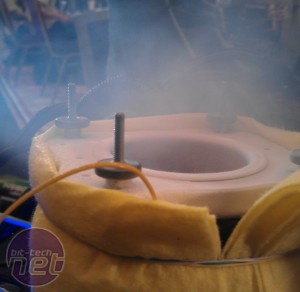
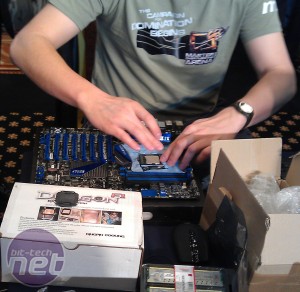
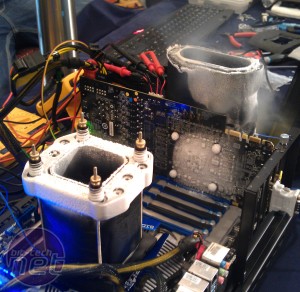
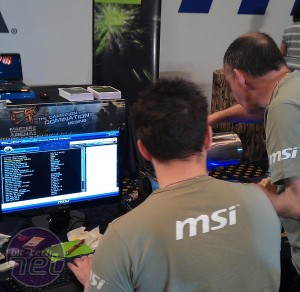
The competition became tense towards the end of the weekend, and some teams threw caution to the wind (bottom left, note the frost on the back of the GPU) in an attempt to get a good score
With the focus now solely on GPU performance, a number of teams started to stand out that had clearly been held back by their poor CPUs in the previous two tests. At the top of this list were the guys in the relatively inexperienced Iranian team, who were in their first overclocking competition. Their score of 9,226 shot them up the table, although at this point they were mainly fighting for pride given their poor previous results.
The reigning champions also started to make themselves heard after posting relatively uninspiring mid-table results in the previous two tests. Their score of 9,497 was the fourth best of the day and was enough to push them up into one of the five qualification slots. Joining them at one point were their fellow country man and woman from the XXX corps team. They were displaced by the German team towards the end of the session, though, which prompted much frantic benching and gesticulation from the Swedish team as they desperately tried to snatch back 5th place and its two tickets to Taipei.

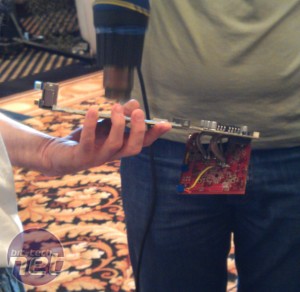
The guys in the UK team had their GPU running at -147oC at one point, while the Ukrainian team came equipped with an audacious graphics card volt-mod
The best score of the day went to the guys in the quietly industrious Russian team, who stretched their GPU out to an epic 1.47GHz core and 2.35GHz memory. They coupled this with a CPU speed of 5.4GHz to bank a score of 9,774, which proved unbeatable on the day.
Sadly, the folks in the UK team missed out on the renaissance for which they were hoping. The replacement motherboard proved slightly less temperamental than their first (they could finally run their memory at its rated speed of 2,133MHz for the first time that weekend), but it wasn’t enough to gain them any places in the table. Their eventual score of 8,152 was achieved with a 1.17GHz GPU core and 2.45GHz graphics memory, and their troublesome CPU running at 5GHz.

MSI MPG Velox 100R Chassis Review
October 14 2021 | 15:04









Want to comment? Please log in.